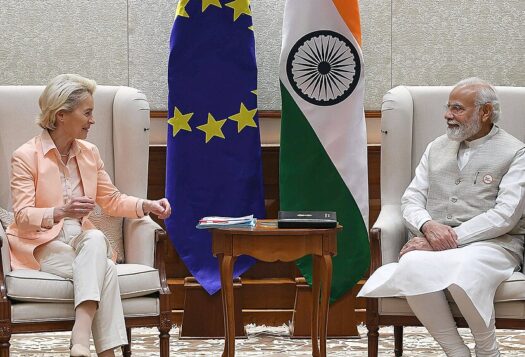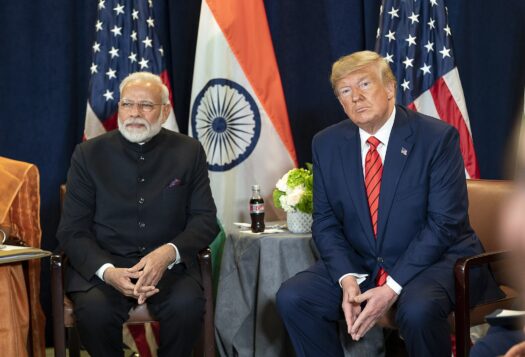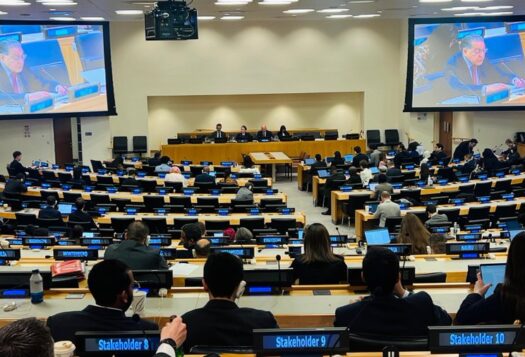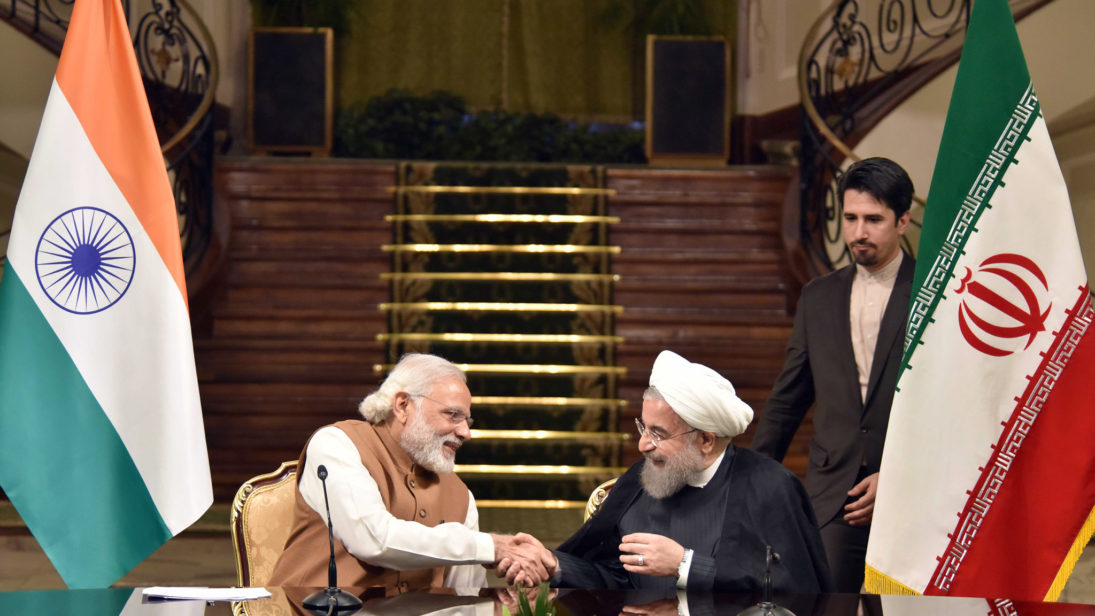
The ambitious China-Iran USD $400 billion deal has raised suspicion in India. According to a New York Times report, the proposed deal centers on developing Iran’s, “banking, telecommunications, ports, railways and dozens of other projects,” in return for a continuous supply of cheap oil from Iran for the next 25 years. There are nearly 100 projects listed in the draft that will see Chinese investments; including the expansion of Iran’s oil industry, construction of Free Trade Zones and strategic ports, and support of Iran’s digital infrastructure.
The recent geopolitical transformations that have seen a strengthening of India-U.S. bilateral relations along with strained U.S.-Iran and U.S.-China ties have pushed India into a difficult strategic position with Iran. The China-Iran deal endangers India’s Chabahar port deal; a bilateral agreement between India and Iran to develop Iran’s Chabahar Port to open a transit route to Afghanistan and Central Asia for Indian goods. Along with the heightened India-China tensions, the proposed China-Iran deal gives China more leverage with Iran, impacting India’s long-term strategic economic relations with the latter.
The United States, China, and Iran
Iran is considered a key strategic partner for China’s geopolitical ambitions. While China will acquire deeper regional influence ensuing the success of the China-Iran deal, Iran, on the other hand, will gain newfound access across Asia if the deal is able to deliver on its promise of improved transportation infrastructure.
The China-Iran strategic partnership was not exclusively borne out of the recent deal; both countries have been improving ties for years. Chinese President Xi Jinping was one of the first heads of state to visit Iran after international trade sanctions on Iran were lifted in 2016. During this visit, China and Iran signed several accords and agreed to increase bilateral trade in the next decade. China has also established a larger regional footprint by expanding its trade relations with Iran. The first direct train service route was established between Yiwu (Zhejiang Province) and Tehran in 2016 and Iran signed on to China’s ambitious Belt and Road Initiative in 2019.
As each of their relationships with the United States has deteriorated, China and Iran have strengthened their partnership further. In 2018, after the United States left the Joint Comprehensive Plan of Action (or the Iran nuclear deal) the Trump administration placed renewed economic sanctions on Iran and demanded that all countries end imports of Iranian oil – a major component of Iran’s economy. India, once Iran’s second-largest oil importer, followed suit and ended its oil imports from Iran in May 2019. With Iran being marginalized by the United States, China stepped in and continued importing oil, defying the U.S. sanctions. Along with sanctions, Washington-Tehran relations hit a new low when the U.S. ordered the assassination of Soleimani, the head of Iran’s Revolutionary Guard Corps’ Quds Force.
U.S.-China relations have also worsened in recent years. Beyond the U.S.-China “trade war”, the Trump administration has repeatedly criticized Beijing over a range of issues, most recently the Covid-19 global pandemic, treatment of Muslim minorities, and reaction to the Hong Kong protests. The mutual threat from the U.S. provided the impetus for Iran to sign the USD $400 billion deal with China. Since India is a close partner of the United States, U.S.-Iran relations and U.S.-China relations directly impact India’s interests in Iran. India’s ties with the U.S. casts a shadow of Iran’s mistrust over India. Now, through this proposed deal, China could influence Iran to push India to the sidelines.
Given the closeness between China and Pakistan, the addition of Iran to the mix by this proposed security partnership poses a serious threat to India’s regional security and additionally hampers India’s interests in Afghanistan.
The India-Iran partnership deteriorated post-2005 when the U.S. nudged India to forgo its relations with Iran as a condition for finalizing the Indo-U.S. nuclear deal. Accordingly, India voted against Iran in the September 2005 International Atomic Energy Agency session on the implementation of non-proliferation treaty safeguards in Iran, leading to severe sanctions on the Islamic Republic. Since then, India-Iran relations have been tumultuous. Additionally, the Trump administration’s aggression and sanctions on Iran led India to end all imports from the latter. Given the closeness between China and Pakistan, the addition of Iran to the mix by this proposed security partnership poses a serious threat to India’s regional security and additionally hampers India’s interests in Afghanistan.
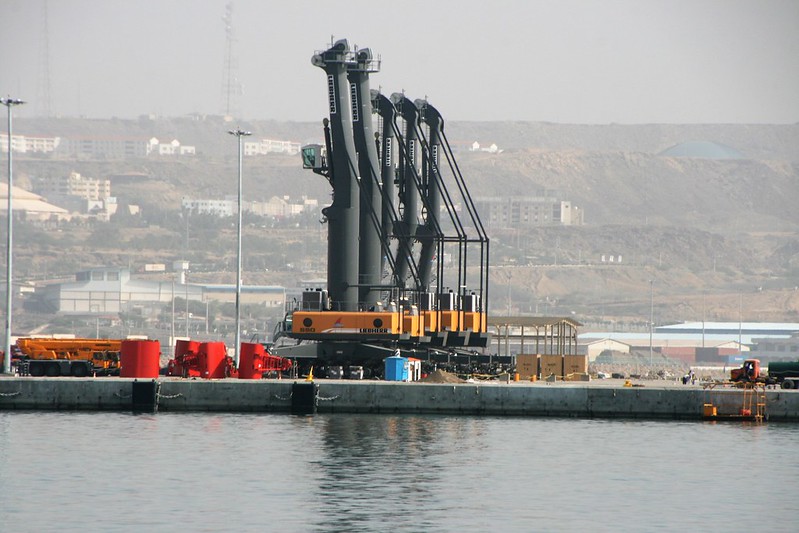
The Chabahar Port Project and Concerns for India
China’s growing presence in Iran comes at a time when India is intensely competing with China for regional dominance. Moreover, due to deteriorating relations with Nepal, declining ties with Bangladesh, and increasing Chinese influence in Myanmar, India is falling short with respect to soft power competition with China in the region.
One of the major implications for India of the China-Iran deal is the impact it may have on the Chabahar port project. In 2016, India signed a bilateral agreement with Iran to invest USD $500 million to develop Chabahar Port in Iran. This strategically sound project was seen to counter-balance the China-Pakistan Economic Corridor projects in Gwadar Port. The Chabahar project could have provided India with independent connectivity to Afghanistan through Iran which Pakistan had denied, along with connectivity to Central Asia and Russia.
However, the development of the Chabahar port was halted twice, first in November 2018 and then in May 2019 due to U.S. sanctions on Iran. Even though India obtained a waiver from the United States in 2019, the project had been delayed already. U.S.-Iran tensions following Soleimani’s assassination in 2020 and the Covid-19 pandemic has further delayed construction. With the new China-Iran deal about to close, there were reports that India was dropped from the Chabahar projects due to delayed funds. Following this assertion, a deputy to Iran’s Ports and Maritime Organization, Farhad Montaser, clarified, “Iran has only signed two agreements with Indians for investment in Chabahar: one is related to port’s machinery and equipment, and the second is related to India’s investment to the tune of $150 million.” India has also denied being dropped from the Chabahar project.
The Indian government has allocated USD $1 billion to the high-stakes Chabahar port project in its annual budget of 2020. Iran is unlikely to decline any direct investments from India since it needs foreign investment to sustain its economy. In addition, India should maintain its support of the United States’ Iran policy in consideration of the upcoming U.S. elections and the recent opposition in the UNSC to reinstating U.S. sanctions on Iran. Bearing in mind that sanctions on Iran may be reduced or lifted with a new administration, India, by reasserting its support for the United States, could broker favorable deals in Iran for the Chabahar project by receiving additional waivers from the United States leading to Iran’s continued collaboration with India.
The proposed agreement with China comes at a time when Iran is suffering from an economic crisis exacerbated by U.S. sanctions and the global Covid-19 pandemic. India, sustaining a quasi-alliance with the United States while resisting border-conflict with China, has been forced into a high-stakes regional conundrum. It is time for India to rework its relations with other countries to regain its regional status. It could start by completing halted infrastructure projects in Nepal, Bangladesh, and Myanmar to regain some of its regional power. Likewise, Iran should consider capitalizing on the sanctions waiver on the development of the Chabahar port and explore the possibility that India will continue to receive waivers for future projects in Iran. It is time for India to seek alternative ways to establish security ties with Iran by striking a balance between Iran, the United States, and China.
***
Image 1: Narendra Modi via Flickr
Image 2: Diethelm Scheidereit via Flickr
